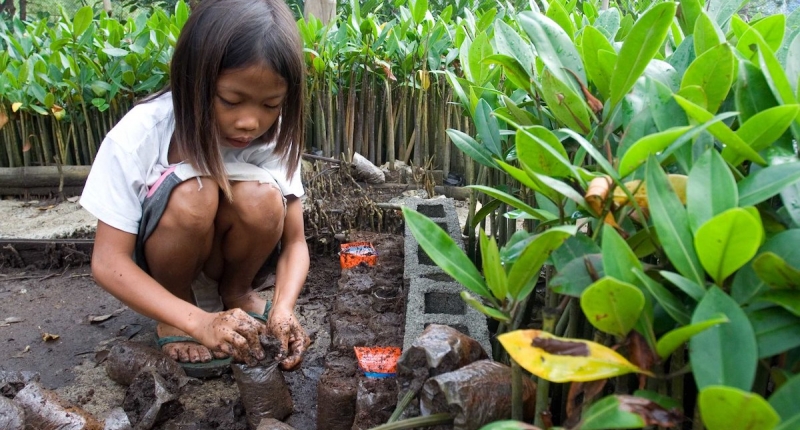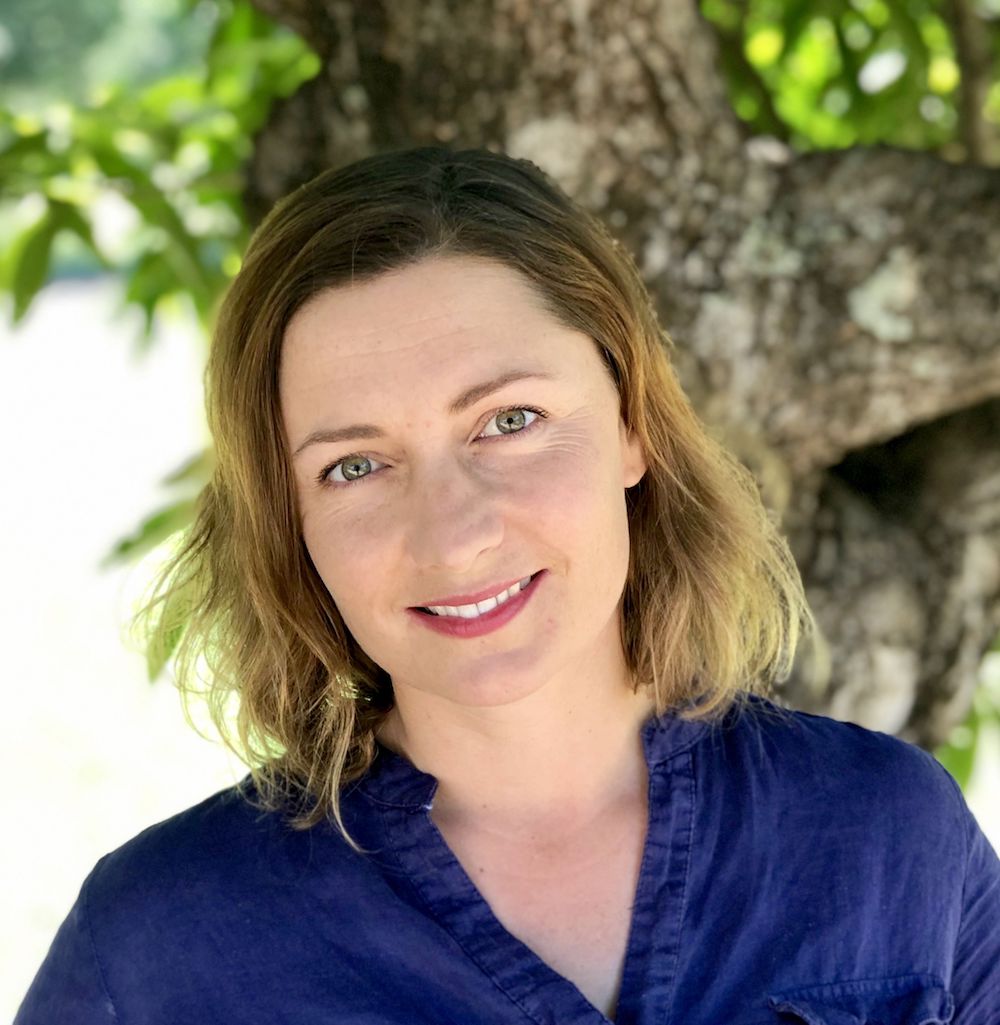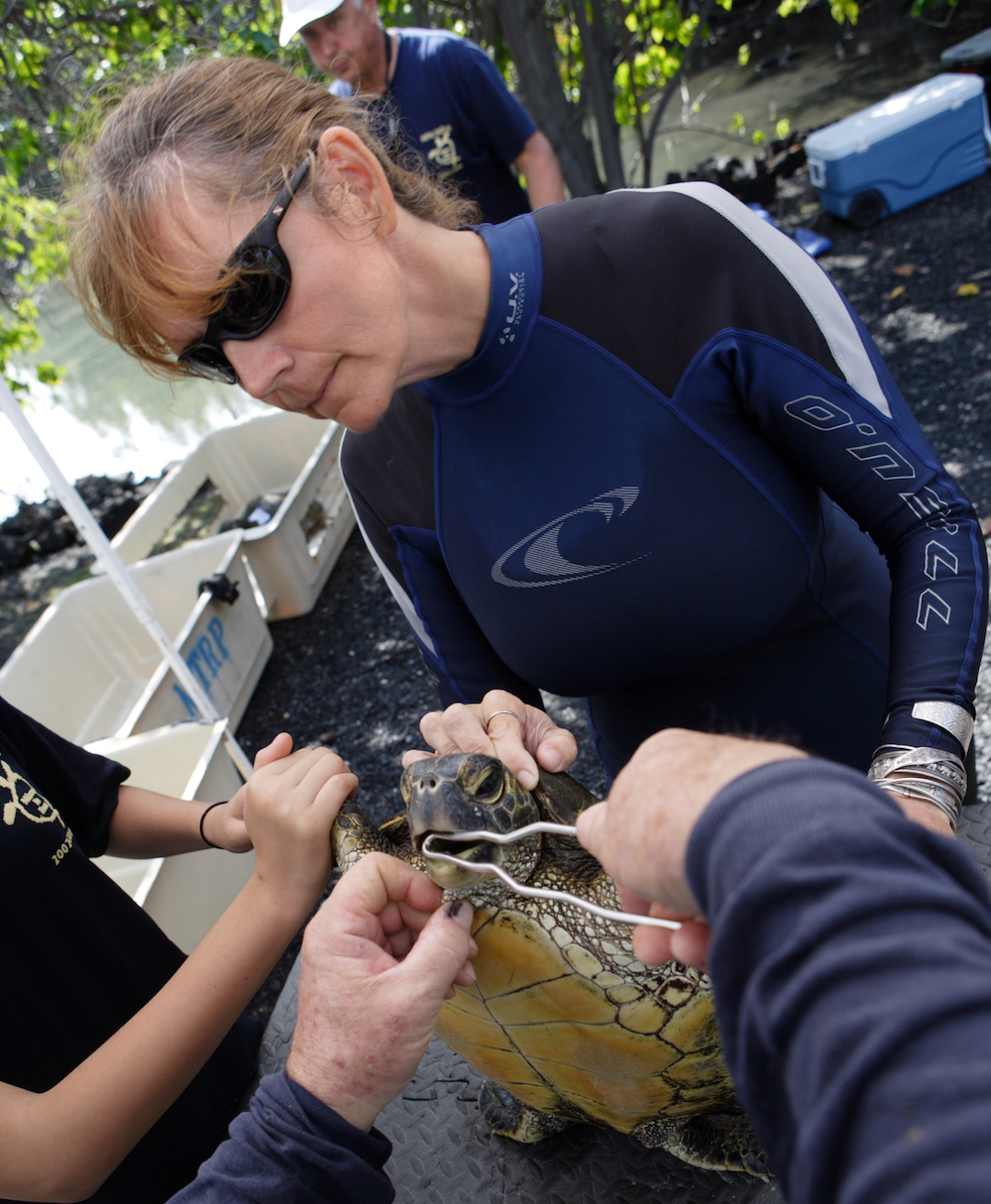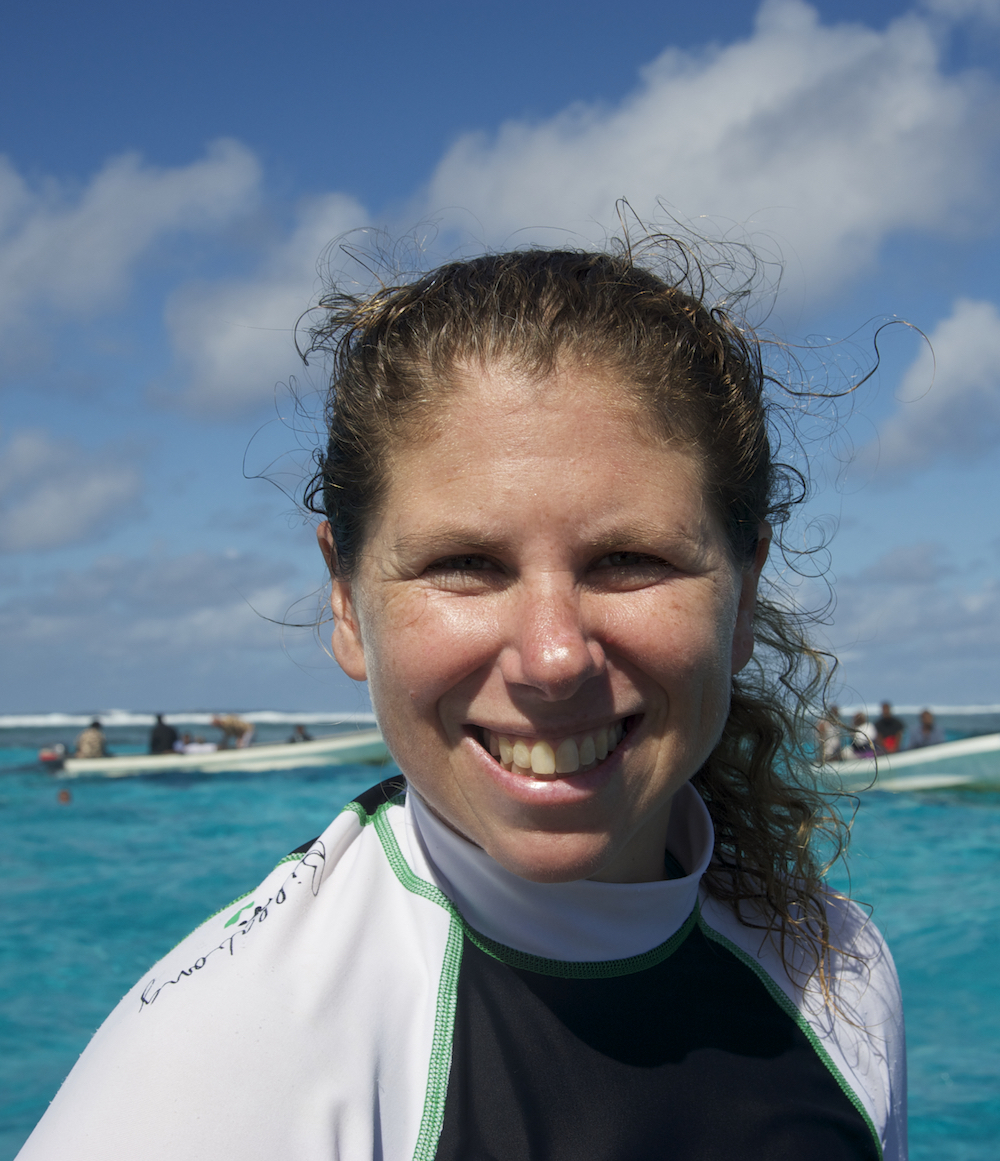The Big Picture: How to Sustain Biodiversity

Of course, there is no silver bullet solution for how to sustain biodiversity, which makes this question ripe for synthesis research. By synthesizing data and perspectives from across studies, disciplines, and sectors, researchers can get the big picture on what’s required to sustain biodiversity at different scales and what works (or doesn’t), which is the sort of information needed to design management plans and policies that are more likely to have the intended outcomes.
This is basically the pursuit of working groups in our Science for Nature and People Partnership (SNAPP). But they’re seeking more than just that bird’s eye view, and to them, sustaining biodiversity means more than solely protecting species and ecosystems. These teams also work to turn those insights into on-the-ground actions and solutions that will also improve human lives.
In our final Big Picture roundtable focused on biodiversity, five researchers from different SNAPP working groups offer their bird’s eye views, each from a different angle on what it could take to halt and reverse biodiversity loss and protect the benefits people receive from biodiverse ecosystems.
Martine Maron led a team that investigated the effectiveness of a method for protecting biodiversity that is rising in popularity: compensatory conservation programs, such as offsets for biodiversity loss. Susanna Sokolow’s team is identifying win-win solutions for biodiversity and human health, in particular when conservation measures also reduce or prevent diseases. Samantha Cheng was a postdoctoral researcher on a team focused on making scientific evidence for the success of conservation measures more accessible and usable to researchers and practitioners. Eleanor Sterling and Stacy Jupiter’s team defined indicators for sustainable development that incorporate social and cultural information, which is often overlooked, and they are now working to incorporate these biocultural indicators into international frameworks such as the UN Sustainable Development Goals.
What is the most important or surprising insight that your SNAPP working group contributed to the greater understanding of how to sustain biodiversity?

Maron: One response to sustaining biodiversity is the “mitigation hierarchy,” which requires proponents of projects that potentially damage biodiversity to first avoid, then minimize, restore, and, finally, offset impacts. The idea is to achieve at least “no net loss.” Our SNAPP working group focused on offsetting biodiversity impacts, which is a controversial approach. There are good reasons for this controversy – offsetting is often poorly designed or poorly implemented, and it can even be attempted for biodiversity that simply cannot be replaced. Its no-net-loss outcome is actually ‘relative’ – it depends on what your frame of reference is – and so offsets simply aren’t currently designed to help us meet biodiversity targets. Our group set to the challenge of developing a new framework called “target-based ecological compensation.” This approach aligns the compensation requirements for a given loss in biodiversity with the desired outcomes, and makes the net outcome clear. For example, for habitat that is too depleted and we have a target to increase it, an absolute net gain of habitat through restoration would be required so that, after an unavoidable loss to biodiversity, there is still more of the target habitat than there was before.
Sokolow: We have identified several dozen potential win-win solutions that reduce human infectious disease and improve conservation goals simultaneously. Perhaps not surprising is that most solutions are still at the hypothetical stage, but the vast majority of them seem promising and hopeful. Examples of these “ecological levers for health” include building “water ladders” in rivers impacted by dams to benefit migrating native prawns, which can in turn help reduce human schistosomiasis by eating the snails that are the disease’s vector; also, restoring wetlands and seagrasses enables their water-purifying benefits, providing clean water to people and supporting biodiversity. On the flip side, our partnering organizations Health in Harmony and Conservation Through Public Health have found great success in conserving forests and great apes by delivering healthcare to impoverished people living near the last remaining stands of native forest.

Cheng: What was very surprising from our synthesis of evidence-based conservation interventions was that many studies did not include clear articulations of how the authors expected the impacts of biodiversity conservation to occur. Without this, it is not clear what mechanisms they hypothesized are important and whether insights from the study can reliably support whether an intervention is effective and why, especially in different contexts.
Sterling and Jupiter: We have found there are critical dimensions to sustaining biodiversity that are being overlooked almost completely in sustainable development frameworks. These include connections between people, and between people and place, as well as Indigenous and local knowledge, skills, practice, worldviews, and values. Indigenous people manage or have tenure rights over a quarter of the land on Earth, and that land overlaps with 40 percent of all protected areas and intact landscapes. So, the actions that local people take to foster their connections to place and maintain their knowledge and practices are fundamental for conserving biodiversity globally. These gaps can be filled by designing indicators for sustained biodiversity that are culturally attuned and allocate resources to programs and projects that support, rather than undermine peoples’ connection to nature and their abilities to act as good stewards.
An advantage of synthesis research is that it can reveal data gaps that are important to fill to get a full understanding of how to sustain biodiversity. In your SNAPP work, what data gaps did you discover?
Maron: We wanted to examine scenarios in about a dozen different countries, spanning a range of wealth and levels of human development. Each scenario required collating datasets that capture many different phenomena, and we needed the same suite of datasets for each country. Sometimes, one piece of the puzzle simply didn’t exist, and sometimes the process for accessing what we needed was too slow for the lifespan of our group. But I think, on the whole, we were able to leverage the group members’ connections really effectively.

Sokolow: We tried to build out the full causal webs that link conservation measures and human health in a few case studies, using data brought to the table by our diverse team of ecologists, veterinarians, policy experts, doctors, and conservation practitioners. In one exercise, we color coded the links based on the strength of the evidence for them – red for those with the least evidence. Not surprisingly, as soon as you get a few steps away from humans, the diagrams quickly begin to resemble red spaghetti; that is, most of the associations lack scientific evidence. It’s not until you start to build out the details of these complex systems that you realize much of what we consider conventional wisdom lacks the scientific evidence crucial to understanding how to find and scale solutions.
Sterling and Jupiter: We encountered significant gaps in the documentation of local peoples’ “indicators” of well-being, particularly those that emphasize the links between culture and biodiversity. One way to address this is to continue to identify opportunities for community-to-community exchanges and for sharing results from them. A second major challenge we faced, in terms of synthesis research, was that data were collected in such different ways across projects that it was extremely difficult to synthesize them.
Cheng: Grey literature, or reports and evaluations from conservation and development agencies and organizations, are really important to gain key information from ongoing and past programs and projects. However, we found that this information is extremely hard to find – often buried within organizations’ websites and digital storage – and oftentimes without an easy way to access or search for it. Moreover, much of this work is not available online, which really limits our ability to gain insight from this valuable resource.
What is a pressing challenge we have to overcome and a promising opportunity we have to take advantage of in order to sustain biodiversity?

Cheng: One of the greatest limitations to understanding how to sustain biodiversity is being able to keep a pulse on the production of scientific knowledge on conservation, which is being published at exponential rates, not to mention being able to share experiences, anecdotes, and local knowledge. How do we sift through this mountain of resources efficiently to find what is relevant to our individual questions? We overcame this challenge by co-developing a machine learning tool called Colandr. It improves this process by harnessing the power of computational algorithms to “smart-sort” the evidence for what works or doesn’t in conservation.
Sterling and Jupiter: Conventional measures of success for development usually include economy-based indicators, such as Gross Domestic Product and percent of population above poverty thresholds or in formal employment. Our group identified problems with many of these indicators, which ignore other important well-being factors and ultimately could have negative consequences for human well-being and biodiversity. For example, the act of classifying people as impoverished based on western standards that account only for economic aspects of well-being can create shame and, ultimately, foster a hand-out culture, which disconnects people from biodiversity.
Sokolow: I channel the words of John Gardner, a civic leader in the 1960’s. Upon looking at the problems of modern America – including poverty, inequality, and environmental degradation – he said, “what we have before us are some breathtaking opportunities disguised as insoluble problems.” This embodies the view we are taking in our working group: to turn what seems like overwhelming complexity into opportunity. We have to have a paradigm shift from “drivers” of disease and degradation to “levers” of health and conservation.
Maron: Biodiversity loss is like a ratchet – success often means simply halting a decline or preventing a loss, rather than repairing the damage done. I believe that any sort of plan to halt and reverse biodiversity loss needs to start with a vision of where we want to go – to paraphrase Lewis Carroll, if we don’t know where we want to get to, it doesn’t much matter which way we go. We need to keep working at getting high-level frameworks and leadership in place that will genuinely work towards change.

What do you see as the new frontier for how we sustain biodiversity, especially one that makes you hopeful?
Cheng: Being more inclusive about the ways in which we monitor and evaluate change and its impacts to people and our planet. What I find very encouraging in my work now is the depth of collective efforts across diverse stakeholders – researchers, practitioners, tribal communities, and governments – to understand how well-being can be described and measured in ways that are relevant and useful for both local communities and tracking global progress to sustainability.
Sterling and Jupiter: We also need to engage people through approaches that best promote their local well-being. Some countries are already realizing this. For example, Vanuatu has incorporated culturally relevant indicators of well-being into their People’s Plan for Sustainable Development, and New Zealand recently passed a well-being budget, where resource allocation is driven by local well-being needs as opposed to just economic growth. We are encouraging decision-makers to incorporate these principles into national plans and regional policy frameworks, and we are already seeing some uptake, such as within the Framework for Resilient Development in the Pacific.
Sokolow: Simply put: it’s not in every case that preserving ecosystems will safeguard human health or vice versa – tradeoffs still exist in some instances – but wherever these win-win opportunities exist, we need identify and to act on them, and fast.
Maron: Industry is transforming the globe, and so it is industry that can push for positive change. A relatively small number of large companies is implicated in so much of global change. If even a handful of them adopt and genuinely embrace biodiversity conservation as a fundamental principle, they could help improve environmental standards across vast areas. The finance and insurance industries have enormous leverage, and they are starting to factor in biodiversity risk into their operations. Business has the money and the power, so we need to encourage them to also have the will to help in bending the curve.
Martine Maron (top photo) is a professor at the University of Queensland School of Earth and Environmental Sciences. Susanna Sokolow (second photo) is a disease ecologist, veterinarian, and executive director of Stanford University’s Program for Disease Ecology, Health, and the Environment. Samantha Cheng (third photo) and Eleanor Sterling (fourth photo) are both conservation scientists at the American Museum of Natural History’s Center for Biodiversity and Conservation. Stacy Jupiter (bottom photo) is the director of Wildlife Conservation Society's Melanesia program.
